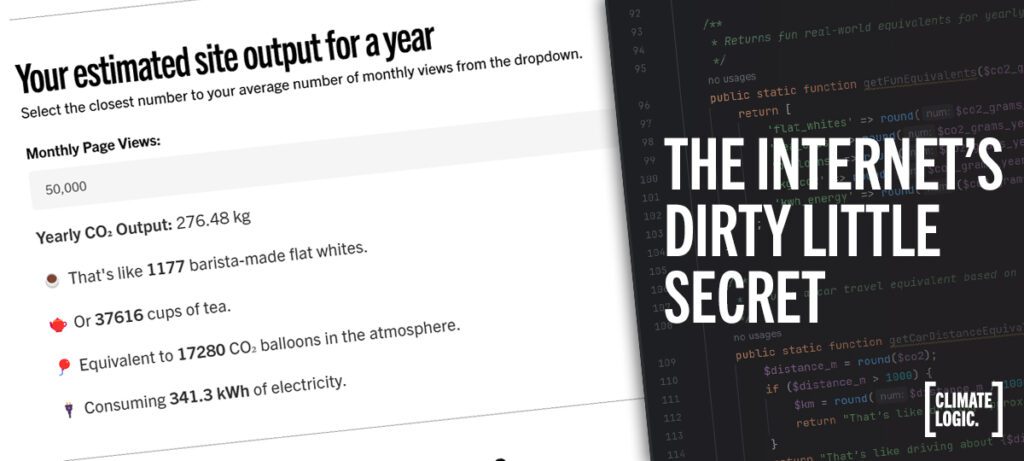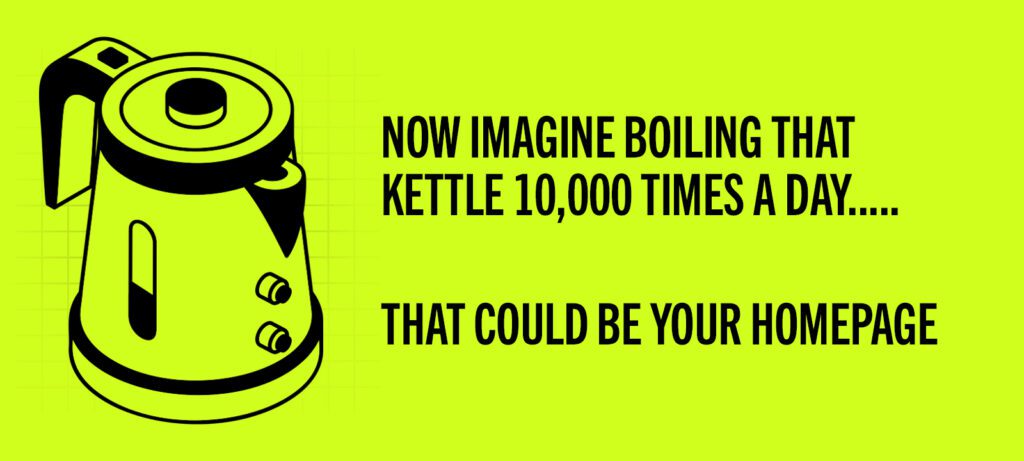Your website has a carbon footprint… what are you doing about it?
A Sustainability Journey, Business Services, Electronics, Social & Environmental Services, Technology
A Sustainability Journey, Business Services, Electronics, Social & Environmental Services, Technology
This article was contributed by Climate Logic.
We tend to think of carbon emissions as something tied to flights, fuel, and factories, not websites. But every click, scroll, and page load uses energy. As more businesses move online, sustainable website development is becoming one of the biggest blind spots in ESG strategies.

The internet produces around 3.7% of global emissions, more than the aviation industry. Why? Data. Every oversized image, autoplay video, and third-party script adds weight to a page. The more data a site loads, the more energy it takes to run.
Put simply, a slow, bloated homepage can produce as much carbon as boiling a kettle. Now multiply that across hundreds or thousands of daily visits, adds up fast.

Sustainable web design is about creating digital experiences that are cleaner, faster, and more efficient. A few key steps:
And it’s not just about the site. Remote teams, energy-efficient devices, and fewer in-person meetings also help reduce your digital footprint.
As sustainability reporting becomes stricter, businesses are being asked to account for all their emissions, not just the obvious ones. That includes your digital presence.
And yet, most companies still don’t consider their website or tech stack in their carbon reporting. That’s a missed opportunity and potentially a reputational risk.
If we say sustainability is a shared responsibility, that needs to include the people behind the screens from the developers, designers and marketers. Because the web we build reflects the world we want.
Sustainable web development isn’t a nice-to-have anymore, it’s part of doing business responsibly. And the upside? It’s good for users, good for performance, and good for the planet.
Not sure how your site stacks up? You can test its carbon impact here — it’s a quick way to see how efficient (or bloated) your site really is.
As more companies chase net-zero, will digital sustainability stay a blind spot or become a spark for real change?
This is an article from a SustainabilityTracker.com Member. The views and opinions we express here don’t necessarily reflect our organisation.